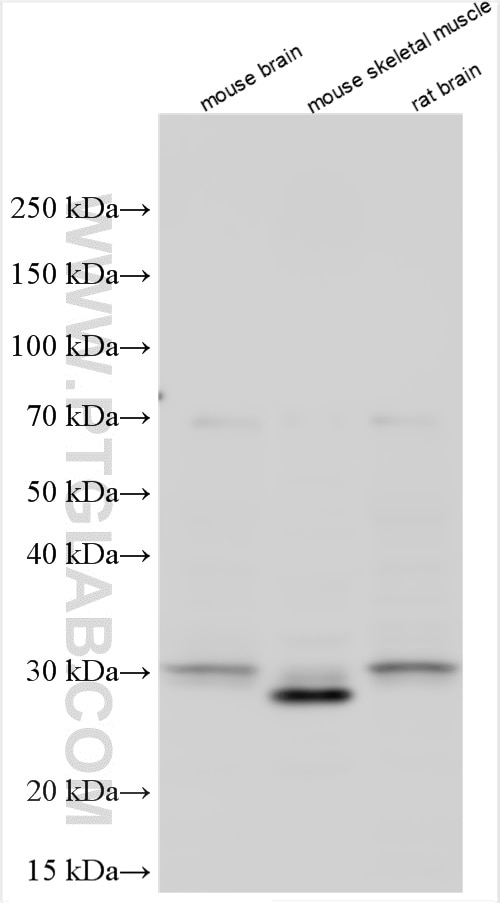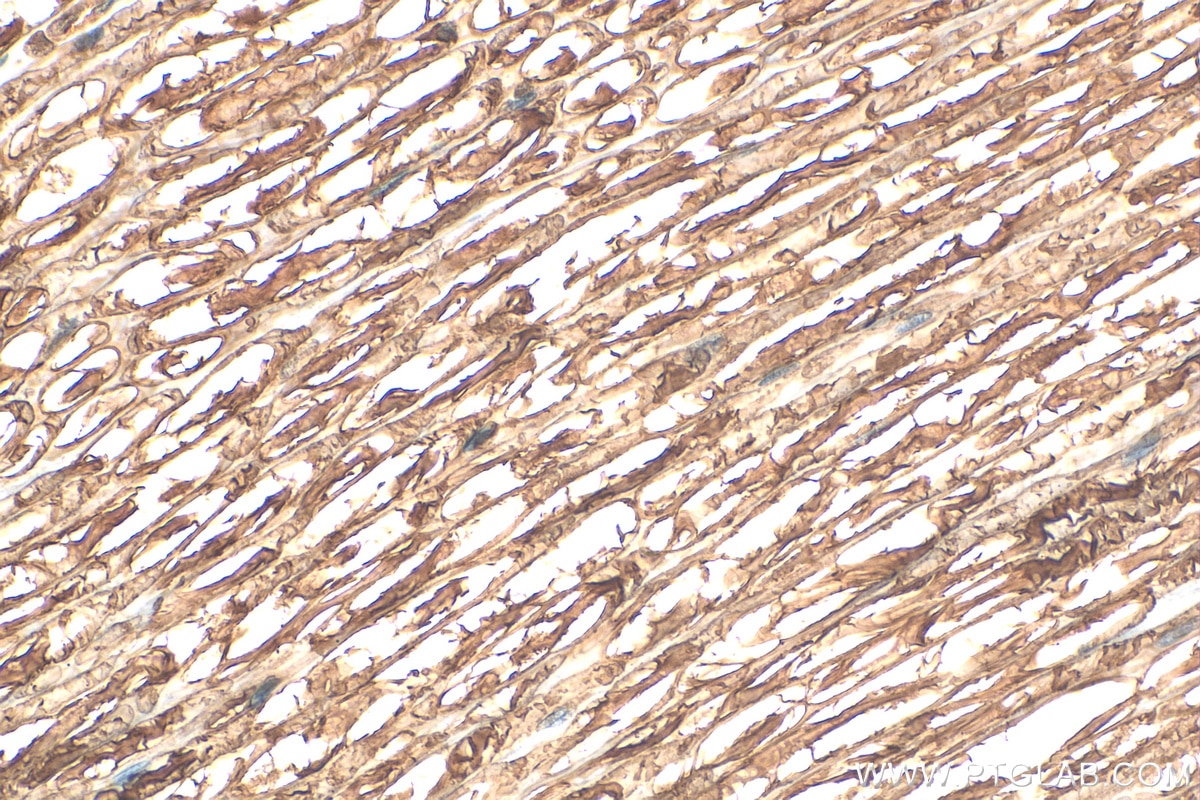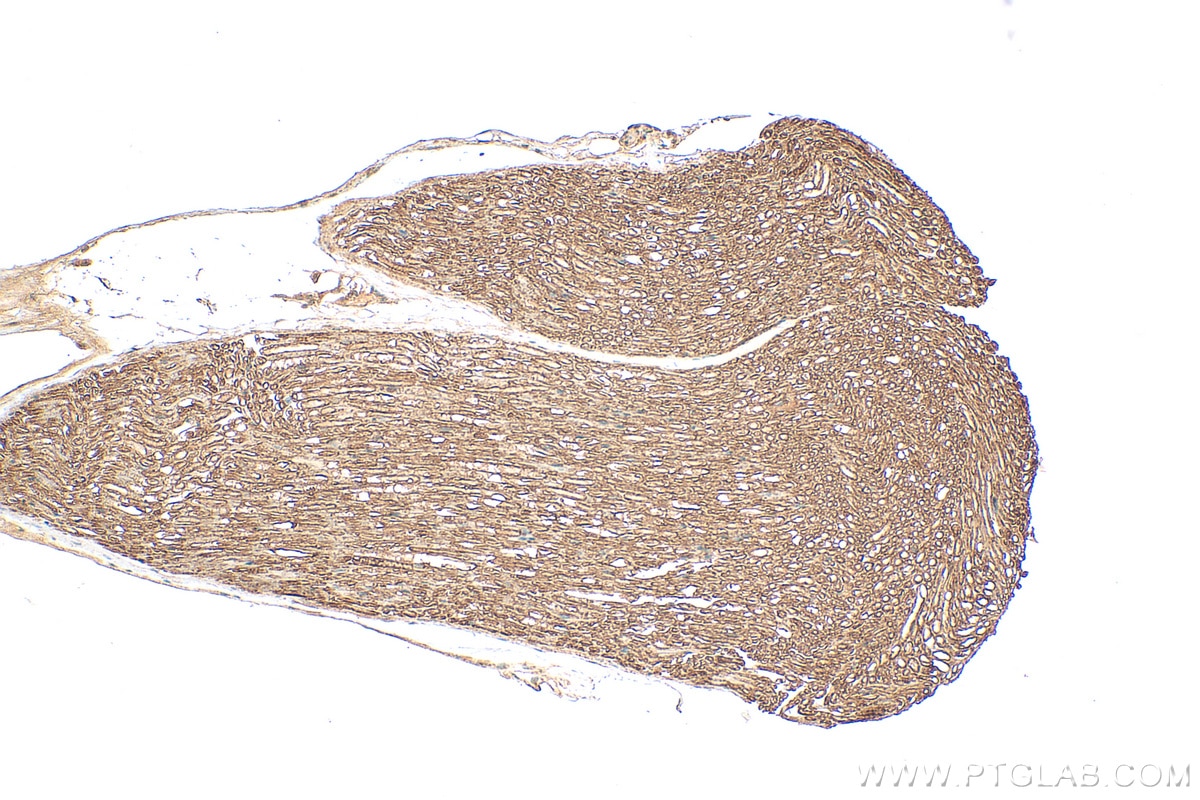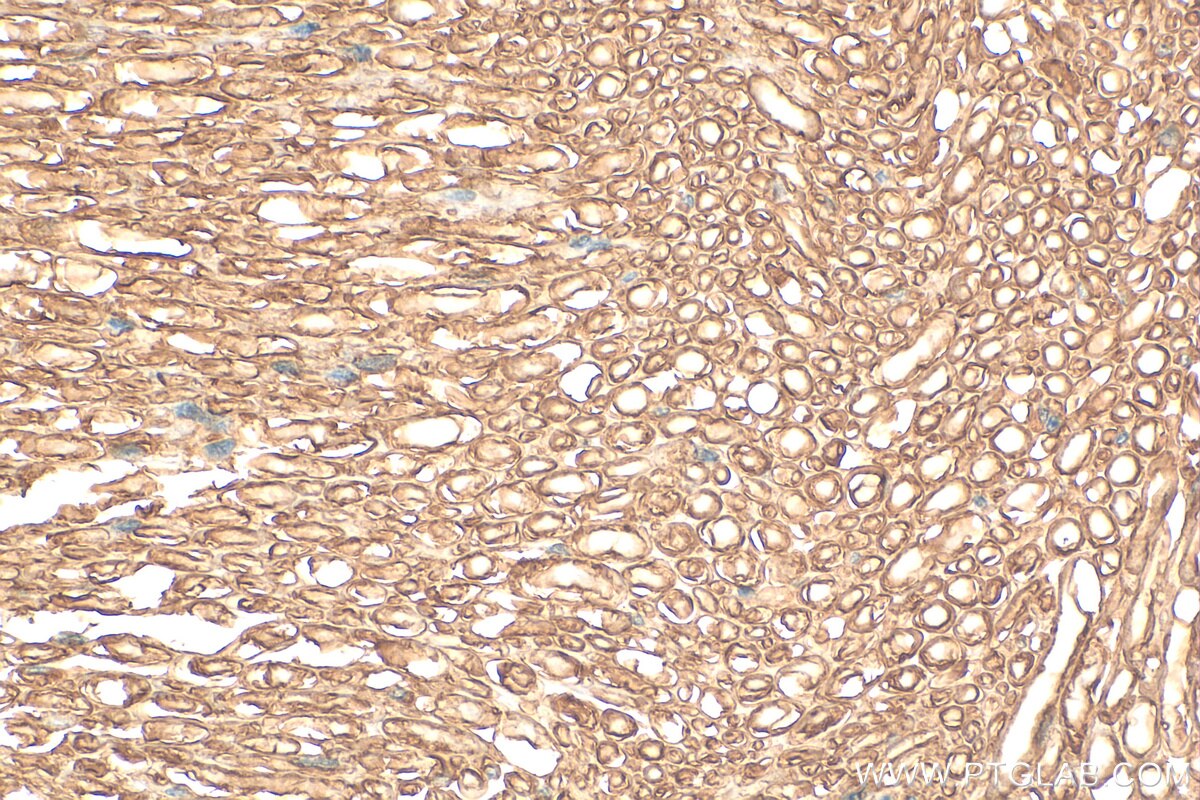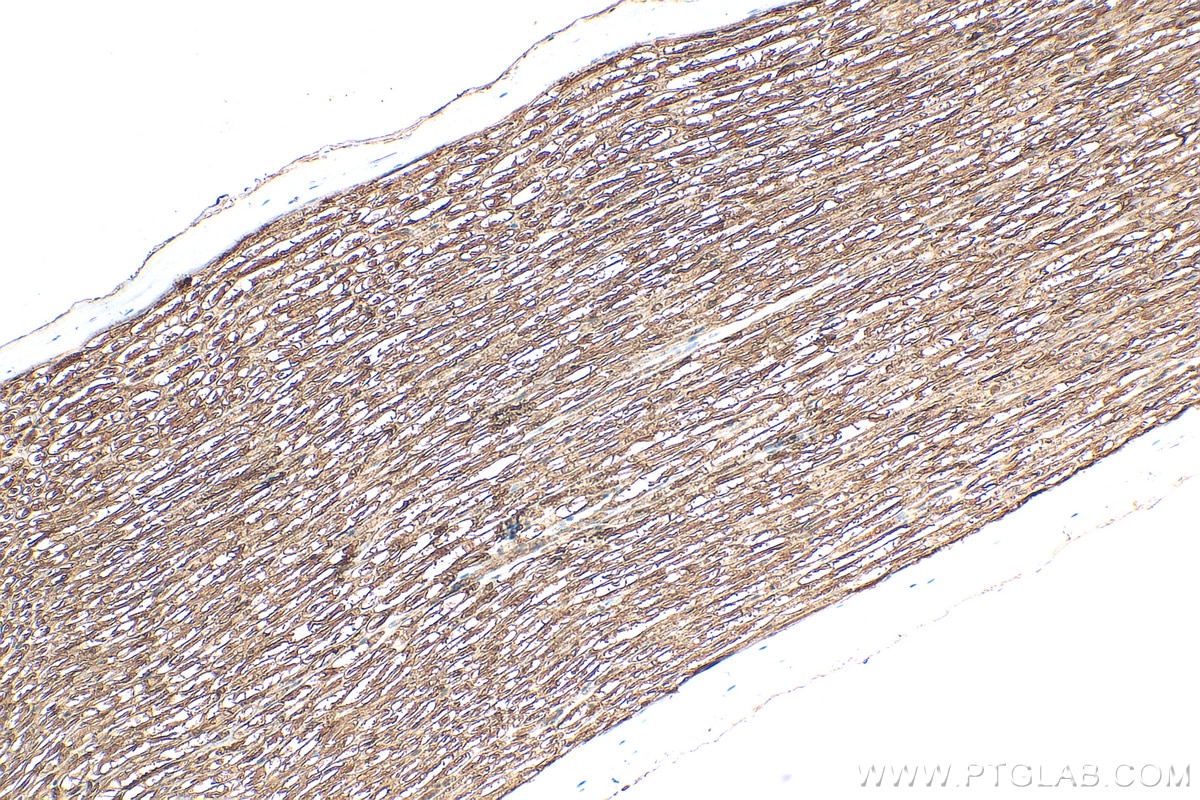MPZ / P0 Polyklonaler Antikörper
MPZ / P0 Polyklonal Antikörper für WB, IHC, ELISA
Wirt / Isotyp
Kaninchen / IgG
Getestete Reaktivität
human, Maus, Ratte und mehr (1)
Anwendung
WB, IHC, IF, CoIP, ELISA
Konjugation
Unkonjugiert
Kat-Nr. : 10572-1-AP
Synonyme
Geprüfte Anwendungen
| Erfolgreiche Detektion in WB | Maushirngewebe, Maus-Skelettmuskelgewebe, Rattenhirngewebe |
| Erfolgreiche Detektion in IHC | rat Ischiadic nerve tissue, mouse Ischiadic nerve tissue Hinweis: Antigendemaskierung mit TE-Puffer pH 9,0 empfohlen. (*) Wahlweise kann die Antigendemaskierung auch mit Citratpuffer pH 6,0 erfolgen. |
Empfohlene Verdünnung
| Anwendung | Verdünnung |
|---|---|
| Western Blot (WB) | WB : 1:500-1:2000 |
| Immunhistochemie (IHC) | IHC : 1:50-1:500 |
| It is recommended that this reagent should be titrated in each testing system to obtain optimal results. | |
| Sample-dependent, check data in validation data gallery | |
Veröffentlichte Anwendungen
| WB | See 12 publications below |
| IHC | See 1 publications below |
| IF | See 8 publications below |
| CoIP | See 1 publications below |
Produktinformation
10572-1-AP bindet in WB, IHC, IF, CoIP, ELISA MPZ / P0 und zeigt Reaktivität mit human, Maus, Ratten
| Getestete Reaktivität | human, Maus, Ratte |
| In Publikationen genannte Reaktivität | human, Maus, Ratte, Frosch |
| Wirt / Isotyp | Kaninchen / IgG |
| Klonalität | Polyklonal |
| Typ | Antikörper |
| Immunogen | MPZ / P0 fusion protein Ag0848 |
| Vollständiger Name | myelin protein zero |
| Berechnetes Molekulargewicht | 28 kDa |
| Beobachtetes Molekulargewicht | 28-30 kDa |
| GenBank-Zugangsnummer | BC006491 |
| Gene symbol | MPZ |
| Gene ID (NCBI) | 4359 |
| Konjugation | Unkonjugiert |
| Form | Liquid |
| Reinigungsmethode | Antigen-Affinitätsreinigung |
| Lagerungspuffer | PBS with 0.02% sodium azide and 50% glycerol |
| Lagerungsbedingungen | Bei -20°C lagern. Nach dem Versand ein Jahr lang stabil Aliquotieren ist bei -20oC Lagerung nicht notwendig. 20ul Größen enthalten 0,1% BSA. |
Hintergrundinformationen
MPZ (myelin protein zero), also known as P0, is a transmembrane glycoprotein that belongs to the immunoglobulin supergene family. Synthesized by myelin-forming Schwann cells, MPZ is the major structural protein component of myelin in the peripheral nervous system. It is involved in the formation and maintenance of compact myelin and plays a role in the creation of an extracellular membrane face which guides the wrapping process and ultimately compacts adjacent lamellae. More than 120 mutations detected in the gene of MPZ cause various forms of hereditary neuropathy, which include Charcot-Marie-Tooth disease type 1B (CMT1B), CMT2, Dejerine-Sottas syndrome (DSS), and congenital hypomyelination neuropathy (CHN). This antibody can recognize endogenous MPZ and can be used as a marker of myelinating Schwann cells. MPZ can be detected the 25-30 kDa band by western blot. A band of 36 kDa could also be detected, which is a novel isoform of MPZ that contains an additional domain at the C-terminal (PMID: 22457349). It can also exist as a dimer (PMID: 12933931).
Protokolle
| PRODUKTSPEZIFISCHE PROTOKOLLE | |
|---|---|
| WB protocol for MPZ / P0 antibody 10572-1-AP | Protokoll herunterladen |
| IHC protocol for MPZ / P0 antibody 10572-1-AP | Protokoll herunterladenl |
| STANDARD-PROTOKOLLE | |
|---|---|
| Klicken Sie hier, um unsere Standardprotokolle anzuzeigen |
Publikationen
| Species | Application | Title |
|---|---|---|
Oxid Med Cell Longev Neuroprotective Effect of Salvianolic Acid A against Diabetic Peripheral Neuropathy through Modulation of Nrf2. | ||
Front Cell Neurosci Protein kinase C epsilon activation regulates proliferation, migration, and epithelial to mesenchymal-like transition in rat Schwann cells | ||
Front Endocrinol (Lausanne) Clinical identification of expressed proteins in adrenal medullary hyperplasia detected with hypertension | ||
Stem Cell Res Ther Schwann cells promote prevascularization and osteogenesis of tissue-engineered bone via bone marrow mesenchymal stem cell-derived endothelial cells. | ||
Glia MMP-9 controls Schwann cell proliferation and phenotypic remodeling via IGF-1 and ErbB receptor-mediated activation of MEK/ERK pathway. | ||
